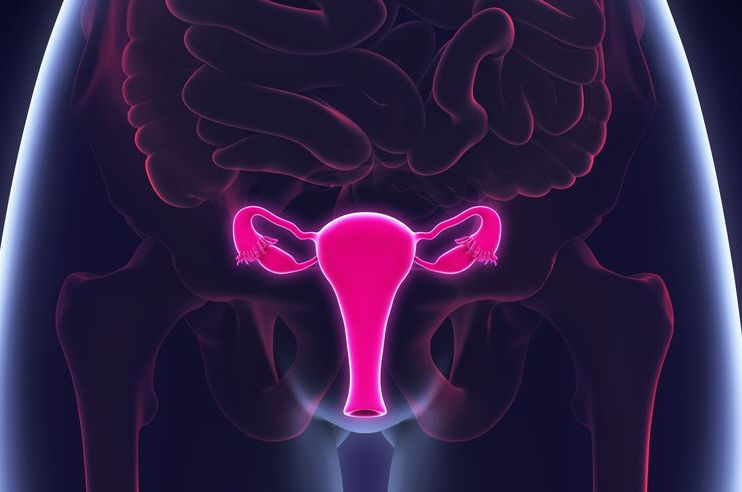Laparoscopic Hysterectomy
A laparoscopic hysterectomy is a minimally invasive surgical procedure to remove the uterus. A small incision is made in the belly button and a tiny camera is inserted. The surgeon watches the image from this camera on a TV screen and performs the operative procedure.
A hysterectomy is an operation to remove the uterus.
This surgery may be done for different reasons, including:
Uterine fibroids that cause pain, bleeding, or other problems
Uterine prolapse, which is a sliding of the uterus from its normal position into the vaginal canal
Cancer of the uterus, cervix, or ovaries
Endometriosis
Abnormal vaginal bleeding
Chronic pelvic pain
Adenomyosis, or a thickening of the uterus
Hysterectomy for noncancerous reasons is usually considered only after all other treatment approaches have been tried without success.
Types of Hysterectomy
Depending on the reason for the hysterectomy, a surgeon may choose to remove all or only part of the uterus. Patients and health care providers sometimes use these terms inexactly, so it is important to clarify if the cervix and/or ovaries are removed:
A supracervical or subtotal hysterectomy removes only the upper part of the uterus, keeping the cervix in place.
A total hysterectomy removes the whole uterus and cervix.
A radical hysterectomy removes the whole uterus, tissue on the sides of the uterus, the cervix, and the top part of the vagina. Radical hysterectomy is generally only done when cancer is present.
The surgeon may remove the ovaries — a procedure called oophorectomy — or may leave them in place. When the tubes are removed that procedure is called salpingectomy. When the entire uterus, both tubes, and both ovaries are removed, the entire procedure is called a hysterectomy and bilateral salpingectomy-oophorectomy.
Surgical Techniques for Hysterectomy
Surgeons use different approaches for hysterectomy, depending on the surgeon’s experience, the reason for the hysterectomy, and the patient’s overall health. The hysterectomy technique will partly determine healing time and the kind of scar, if any, that remains after the operation.
There are two approaches to surgery: a traditional or open surgery and surgery using a minimally invasive procedure or MIP.
Open Surgery Hysterectomy
An abdominal hysterectomy is an open surgery. This is the most common approach to hysterectomy, accounting for about 54% for all benign disease. To perform an abdominal hysterectomy, a surgeon makes a 5- to 7-inch incision, either up-and-down or side-to-side, across the belly. The surgeon then removes the uterus through this incision.
Following an abdominal hysterectomy, a person will usually spend 2-3 days in the hospital. There is also, after healing, a visible scar at the location of the incision.
MIP Hysterectomy
There are several approaches that can be used for an MIP hysterectomy:
Vaginal hysterectomy: The surgeon makes a cut in the vagina and removes the uterus through this incision. The incision is closed, leaving no visible scar.
Laparoscopic hysterectomy: This surgery is done using a laparoscope, which is a tube with a lighted camera, and surgical tools inserted through several small cuts made in the belly or, in the case of a single site laparoscopic procedure, one small cut made in the belly button. The surgeon performs the hysterectomy from outside the body, viewing the operation on a video screen.
Laparoscopic-assisted vaginal hysterectomy: The surgeon uses laparoscopic tools in the belly to assist in the removal of the uterus through an incision in the vagina.
Robot-assisted laparoscopic hysterectomy: This procedure is similar to a laparoscopic hysterectomy, but the surgeon controls a sophisticated robotic system of surgical tools from outside the body. Advanced technology allows the surgeon to use natural wrist movements and view the hysterectomy on a three-dimensional screen.
Comparison of MIP Hysterectomy and Abdominal Hysterectomy
Using an MIP approach to remove the uterus offers a number of benefits when compared to the more traditional open surgery used for an abdominal hysterectomy. In general, an MIP allows for faster recovery, shorter hospital stays, less pain and scarring, and a lower chance of infection than does an abdominal hysterectomy.
With an MIP, people are generally able to resume their normal activity within an average of 3-4 weeks, compared to 4-6 weeks for an abdominal hysterectomy. And the costs associated with an MIP are considerably lower than the costs associated with open surgery, depending on the instruments used and the time spent in the operating room. Robotic procedures, however, can be much more expensive. There is also less risk of incisional hernias with an MIP.
Not everyone is a good candidate for a minimally invasive procedure. The presence of scar tissue from previous surgeries, obesity, the size of the uterus, and health status can all affect whether or not an MIP is advisable. You should talk with your doctor about whether you might be a candidate for an MIP.
Risks of Hysterectomy
Most people who get a hysterectomy have no serious problems or complications from the surgery. Still, a hysterectomy is major surgery and is not without risks. Those complications include:
Urinary incontinence
Vaginal prolapse (part of the vagina coming out of the body)
Vaginal fistula formation (an abnormal connection that forms between the vagina and bladder or rectum)
Chronic pain
Other risks from hysterectomy include wound infections, blood clots, hemorrhage, and injury to surrounding organs, although these are uncommon.
What to Expect After Hysterectomy
After a hysterectomy, if the ovaries were also removed, you’ll be in menopause. If the ovaries were not removed, you may enter menopause at an earlier age than you would have otherwise.
Most people are told to abstain from sex and avoid lifting heavy objects for six weeks after hysterectomy.After a hysterectomy, most people surveyed say they feel the operation succeeded at improving or curing their main problem (for example, pain or heavy periods).

Lorem ipsum dolor sit amet, consectetur adipiscing elit. Phasellus ac aliquam velit. Phasellus dapibus cursus erat, quis consequat urna efficitur non. Phasellus cursus, erat quis mollis lobortis, urna risus hendrerit metus, id dictum metus purus vel magna. Nulla non purus sit amet arcu convallis egestas
Lorem ipsum dolor sit amet, consectetur adipiscing elit. Phasellus ac aliquam velit. Phasellus dapibus cursus erat, quis consequat urna efficitur non. Phasellus cursus, erat quis mollis lobortis, urna risus hendrerit metus, id dictum metus purus vel magna. Nulla non purus sit amet arcu convallis egestas
Lorem ipsum dolor sit amet, consectetur adipiscing elit. Phasellus ac aliquam velit. Phasellus dapibus cursus erat, quis consequat urna efficitur non. Phasellus cursus, erat quis mollis lobortis, urna risus hendrerit metus, id dictum metus purus vel magna. Nulla non purus sit amet arcu convallis egestas

COSMETIC SURGERY
Lorem ipsum dolor sit amet, consectetur adipiscing elit. Ut elit tellus, luctus nec ullamcorper mattis, pulvinar dapibus leo.

COSMETIC SURGERY
Lorem ipsum dolor sit amet, consectetur adipiscing elit. Ut elit tellus, luctus nec ullamcorper mattis, pulvinar dapibus leo.

COSMETIC SURGERY
Lorem ipsum dolor sit amet, consectetur adipiscing elit. Ut elit tellus, luctus nec ullamcorper mattis, pulvinar dapibus leo.
